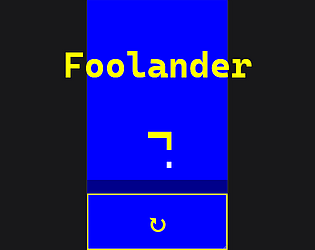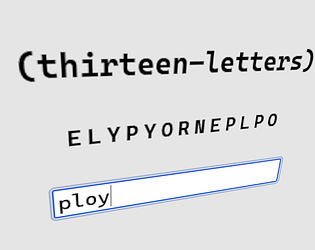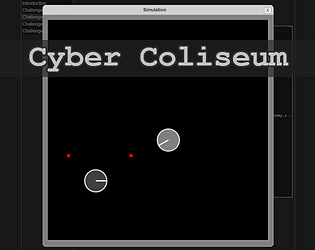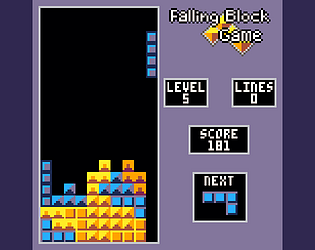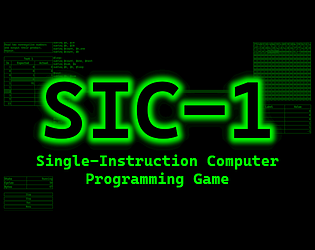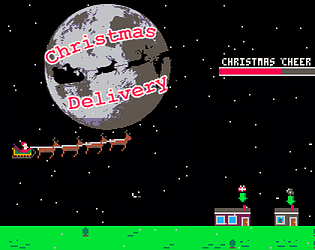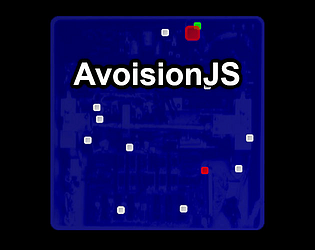FYI: On LOVE 11.5, the selected line has lime text on a lime background, making it so I can't see what I'm typing.
jaredkrinke
Creator of
Recent community posts
Glad you enjoyed it! I have uploaded an up-to-date version. It's also on Soundcloud: https://soundcloud.com/schemescape/sets/sic-1-original-soundtrack
FYI: I just updated the wiki to link to the 2024 Spring Lisp Game Jam.
(Thanks to Vito Van for pointing out that the page is part of a wiki--I didn't realize I could just update it myself :)
Thanks! That does explain why it seemed to work sometimes and not others. I will give it another try. For the record, It looks like my skimming skills failed me, because I now see where this is explicitly noted in the docs:
When computing columns, you're working with lists of elements, and taking advantage of the fact that primitives like<and+automatically "spread" to lists. When performing comparisons, be sure to use=rather than~! If you want to call your own functions- say, to average within a grouped column- write them to accept a list
It even calls out “where” in the next paragraph.
What’s the best way to filter a list based on some predicate?
I was able to use “extract value where … from somelist” for some basic arithmetic, but when I throw a function into the predicate I get unexpected results (“value < f[value]” always seems to be true even though it definitely isn’t).
I’m wondering if I’ve misunderstood the “where” clause and it is only supposed to be used in table columns or something.
FYI: the "turn" button has an "access key" specified ("e"), so it is technically possible to play via keyboard (assuming you know which modifier keys to hold down for your browser+OS combination). For example, on Firefox+Windows, I can hit Alt+Shift+e to rotate the snake.
And yes, having all the input round-trip to a data center in New York is annoying. But is it annoying as requiring JavaScript? ;)
What's the best way to find out when the next Lisp Game Jam is scheduled?
I see a list of past editions here, but I don't think there's a way to subscribe to that file. Obviously, I can check that page periodically, or search on itch.io's Jams page, but I was hoping for something that doesn't require polling web resources.
Are you on an iPad, by any chance? If not, which browser and OS?
If you're on iOS: the game is saved into "HTML Local Storage" in the browser, and unfortunately Apple changed the default settings on iOS to prevent saving data to localStorage when hosted cross-domain (as is done here on itch.io). This was ostensibly done for privacy reasons, but unfortunately it completely broke saves for browser-based games on itch.io for iOS. The only work-around for SIC-1 (short of disabling the "Prevernt cross-site tracking" setting--which I don't recommend doing, since it's a global setting) is to manually export your save data (Options -> Manage Save Data) and then import it next time.
If you're not on iOS: let me know the browser+OS and whether or not any settings (especially privacy/security settings) have been modified, and I'll give it a try.
I was wondering how you managed to get Guile down to a 1 KB cartridge file, but it sounds like that's the magic of Hoot? Edit: or is this just directly coded in the WebAssumbly text format?
Old, possibly irrelevant: Does it require garbage collector support in the WebAssembly runtime? I kind of assumed WASM-4 wouldn't provide that, so now I'm curious.
I didn't see anything built-in, although it looks like there is at least one library: https://github.com/samebchase/hash-set/
Anyone interested in some friendly competition in Thirteen Letters roughly 24 hours from now? Let's say: June 7 at 22:00 UTC.
No worries if not, but I thought I'd ask in case anyone else wants to see what it's like with actual opponents (other than Chad Bot who, despite extreme ineptitude is at the top of the Hall of Fame).
I was watching but stepped away for a minute just when you played Thirteen Letters! I was hoping to give you some competition (also I had an Easter egg planned via a direct REPL connection to the server). Oh well.
Thanks for sharing your play throughs. I’m on Alpine Linux and not as well versed with Nix, so I probably won’t be able to get many of the games to run, but now I got to watch many of them!
Ah, I broke the console version while making the web one. Sorry about that!
I think it would work if you synced the Git sub module (something I should add to the instructions). But fortunately for you *valid-words* is only used on the web server, so even just making it nil should make the console game run 🙂
Thanks for giving it a spin!


